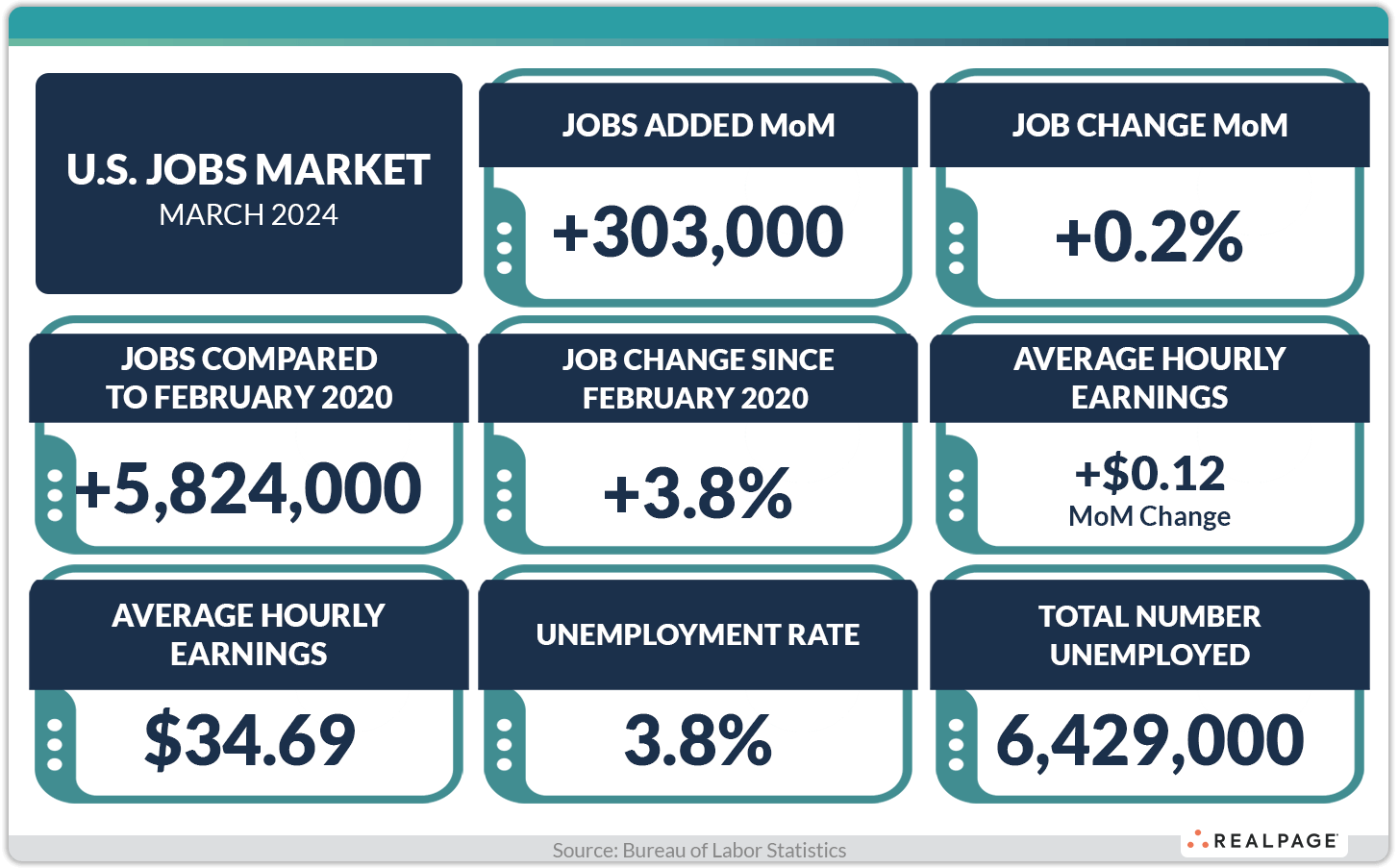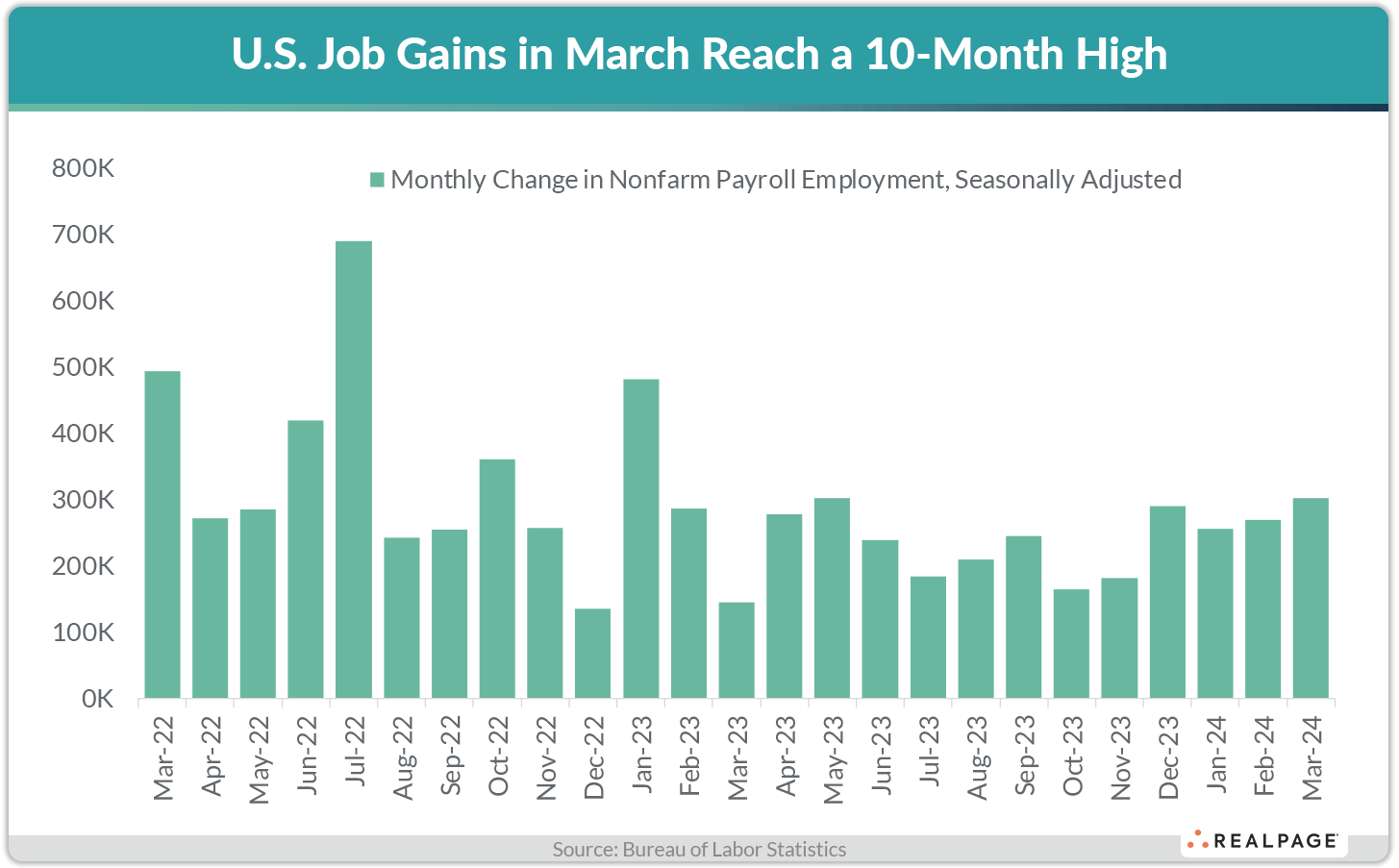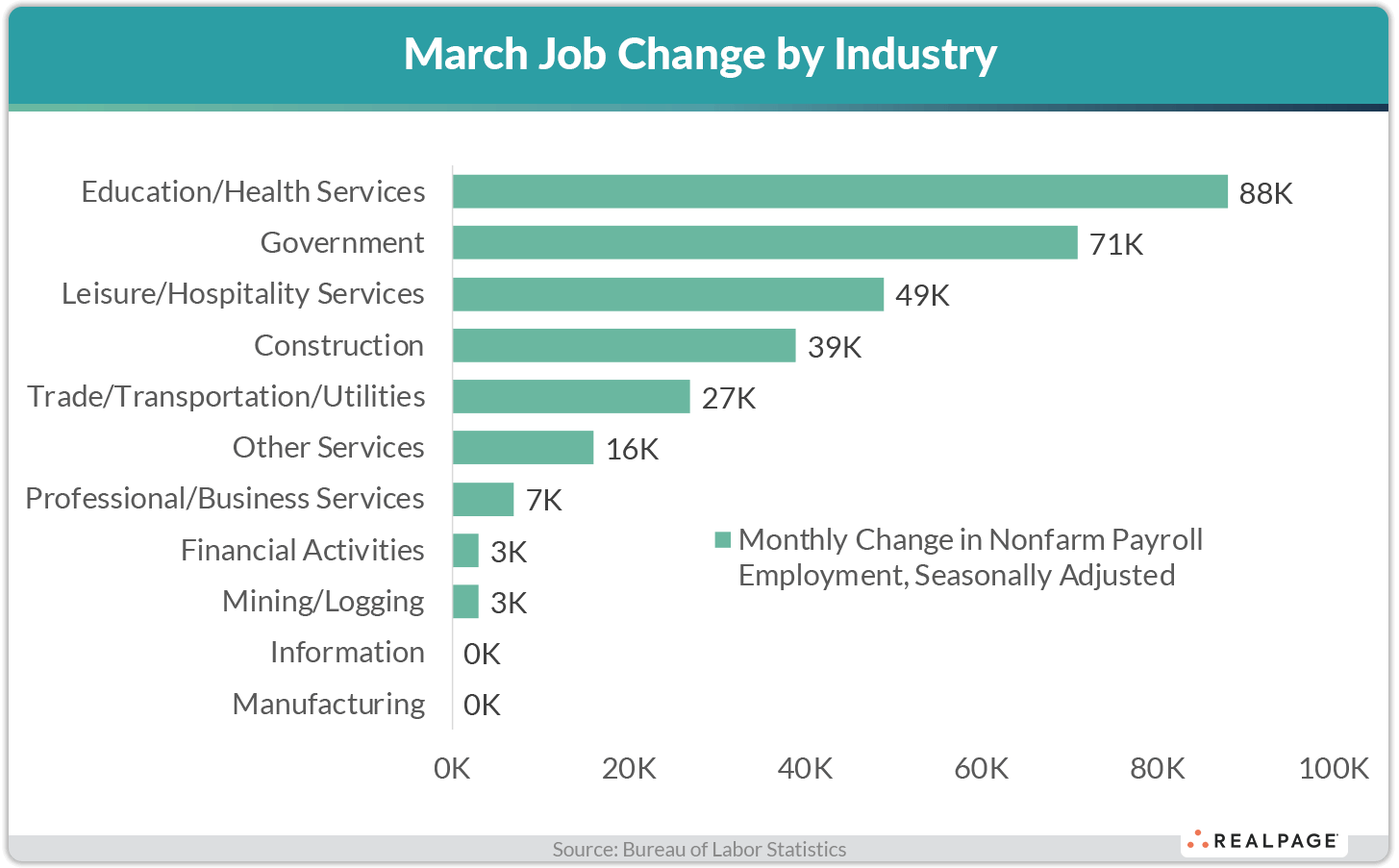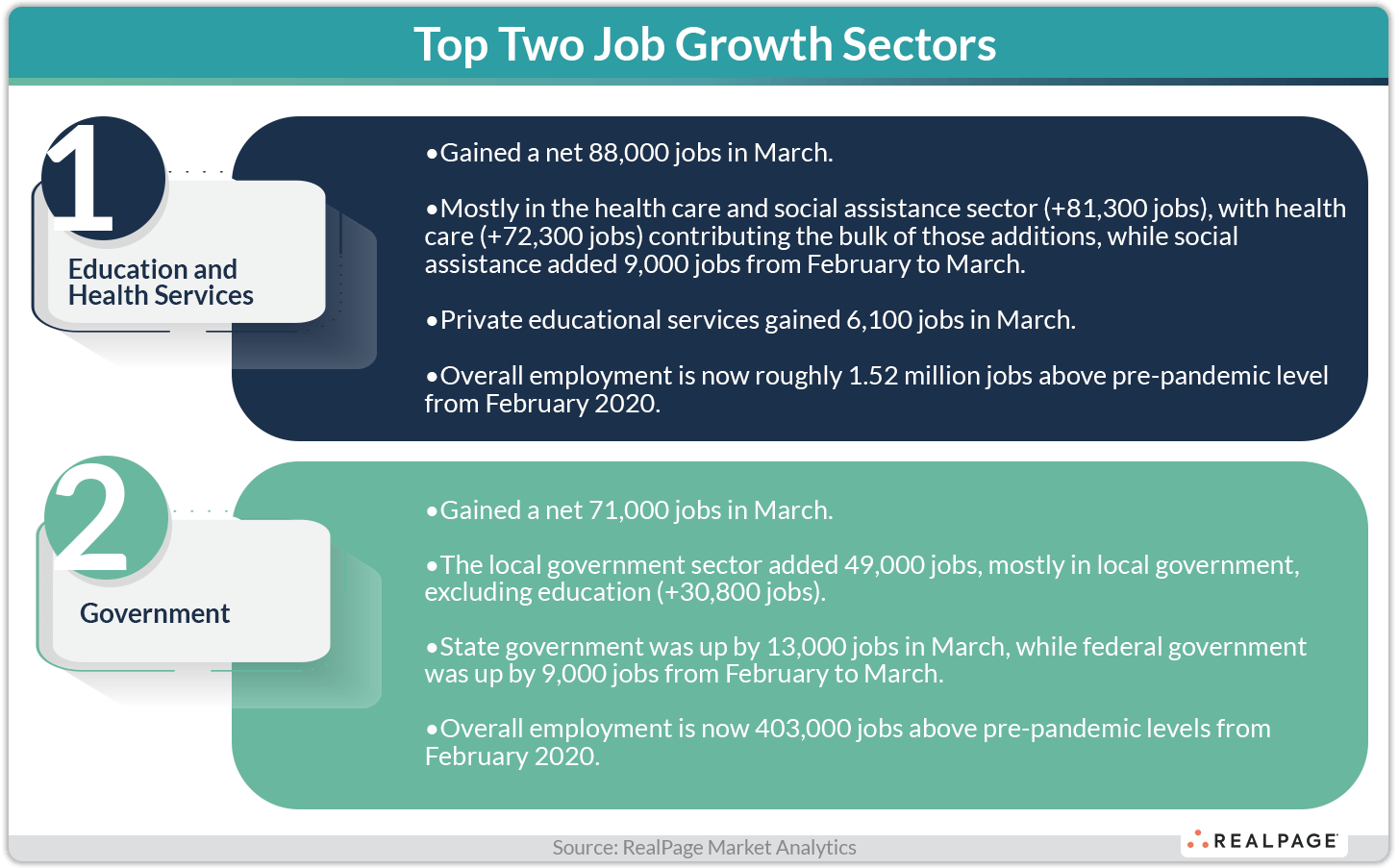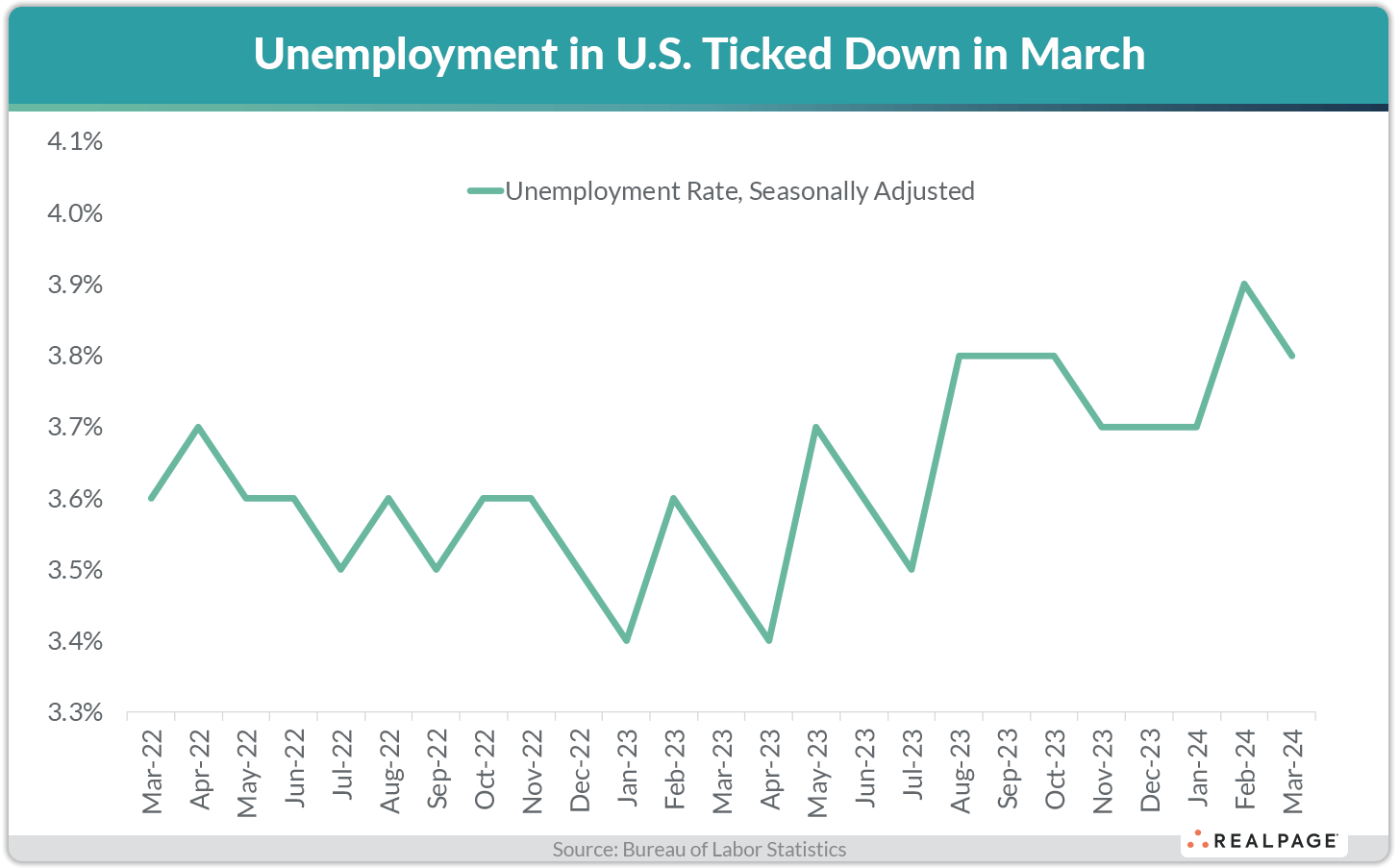The U.S. labor market has remained resilient despite high interest rates and stubbornly high inflation. In March, the U.S. continued to add jobs at a solid pace, exceeding expectations. While the unemployment rate edged down, it was what economists were forecasting.
Employers added roughly 303,000 workers to payrolls in March 2024, according to a survey of businesses by the Bureau of Labor Statistics (BLS). That was an improvement over the 270,000 jobs gained in February (which was revised down), and the biggest one-month gain since May 2023. In addition, recent job gains came in well above what economists were forecasting (+200,000 jobs to +215,000 jobs). The U.S. economy has now added jobs for 39 consecutive months, the fifth-longest period of job base expansion on record (back to 1939).
Of note: The job count for January was revised up while the February job number was revised down. Upward revisions to January 2024 data showed 27,000 more jobs were added than previously reported, up from 229,000 to 256,000 positions. The February 2024 job growth number was revised down, decreasing by 5,000 jobs to a total of 270,000 positions. With these revisions, employment gains in January and February combined were 22,000 jobs higher than previously reported.
Recent job gains were above the monthly average of around 251,000 jobs added throughout calendar 2023 and were ahead of pre-pandemic norms. From 2015 to 2019, the U.S. economy added an average of roughly 190,000 jobs each month.
On an annual basis, the nation gained more than 2.9 million jobs in March 2024. That was the strongest annual gain since December 2023 and above the pre-pandemic average of around 2.4 million jobs added annually from 2015 to 2019.
The U.S. economy has recovered all the net jobs lost during the COVID-19 pandemic. As of March, the nation had over 5.8 million more jobs (+3.8%) compared to the pre-pandemic employment level from February 2020.
Jobs by Industry
None of the 11 major industry sectors lost jobs in March. The most notable job base expansion was in Education and Health Services (+88,000 jobs). Solid gains were also recorded in Government (+71,000 jobs), Leisure and Hospitality Services (+49,000 jobs), Construction (+39,000 jobs), Trade, Transportation and Utilities (+27,000 jobs) and Other Services (+16,000 jobs). Smaller job gains were seen in Professional and Business Services (+7,000 jobs), Financial Activities (+3,000 jobs) and Mining and Logging (+3,000 jobs). Meanwhile, the employment count in the Information and Manufacturing industries was essentially unchanged from February to March.
Most major industries have recovered all the jobs lost during the COVID-19 pandemic downturn. Education and Health Services has now seen the best recovery, with the recent job count coming in roughly 1.524 million positions ahead of February 2020 numbers, closely followed by Professional and Business Services (+1.517 million jobs). Also well ahead of pre-pandemic norms was Trade, Transportation and Utilities (+1.218 million jobs).
The Leisure and Hospitality Services sector, which was the hardest-hit sector during the pandemic, has now recouped all the jobs lost during the pandemic. As of March, that sector had 6,000 more jobs than in February 2020.
Despite recent gains, employment in the Other Services and Mining and Logging industry sectors have yet to recover all the jobs lost during the COVID-19 downturn, with both those segments about 40,000 jobs below their February 2020 levels.
Unemployment
The unemployment rate (U3 or headline unemployment rate, which is seasonally adjusted, is a survey of households) declined 10 bps from February to March registering at 3.8%, in line with economists’ expectations. That marked the 26th consecutive month that the jobless rate has remained below 4%, the longest such streak since the 1960s. The decline in the unemployment rate came amid the labor force participation rate rising from 62.5% to 62.7%.
Since February 2022, the unemployment rate has been in a narrow range of 3.4% to 3.9%, averaging 3.6% during that period. At the onset of the pandemic, the unemployment rate climbed to 14.8% in April 2020. Prior to the pandemic, the unemployment rate clocked in at 3.5% to 5.7% from 2015 to 2019, averaging 4.4% during that five-year period. Prior to 2023, the unemployment rate hadn’t registered below 3.5% since 1969.
The total number of unemployed persons in the U.S. registered at nearly 6.43 million in March, down from about 6.46 million in February.
The unemployment rate for adult men (20 years and over) decreased 20 bps from February to March, to 3.3%. The unemployment rate for adult women (20 years and older) increased 10 bps to 3.6%. Meanwhile, the unemployment rate for teenagers (16 to 19-year-olds) rose 10 bps from 12.5% in February to 12.6% in March.
Average Hourly Earnings
Average hourly earnings among employees on private nonfarm payrolls rose $0.12 (+0.3%) from February to March. That monthly increase took average hourly earnings to $34.69 in March. On an annual basis, average hourly earnings were up $1.38, a 4.1% increase year-over-year. Overall wage growth continues to surpass rising prices, as the Consumer Price Index (CPI) rose 3.2% annually in February. The Fed’s target for inflation is currently at 2%.
Wage growth over the past year was strong across most major industries. The largest increases in earnings from March 2023 to March 2024 were recorded among workers in Financial Activities (5.8%), Manufacturing (5.4%), Construction (5%), Mining and Logging (4.9%), Leisure and Hospitality Services (4.4%) and Professional and Business Services (4.2%). The smallest increases were among employees in Information (2.6%), Education and Health Services (2.9%), Other Services (3.8%) and Trade, Transportation and Utilities (4%).








